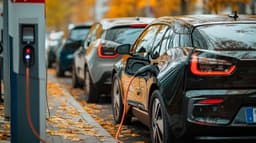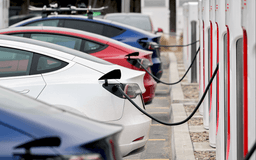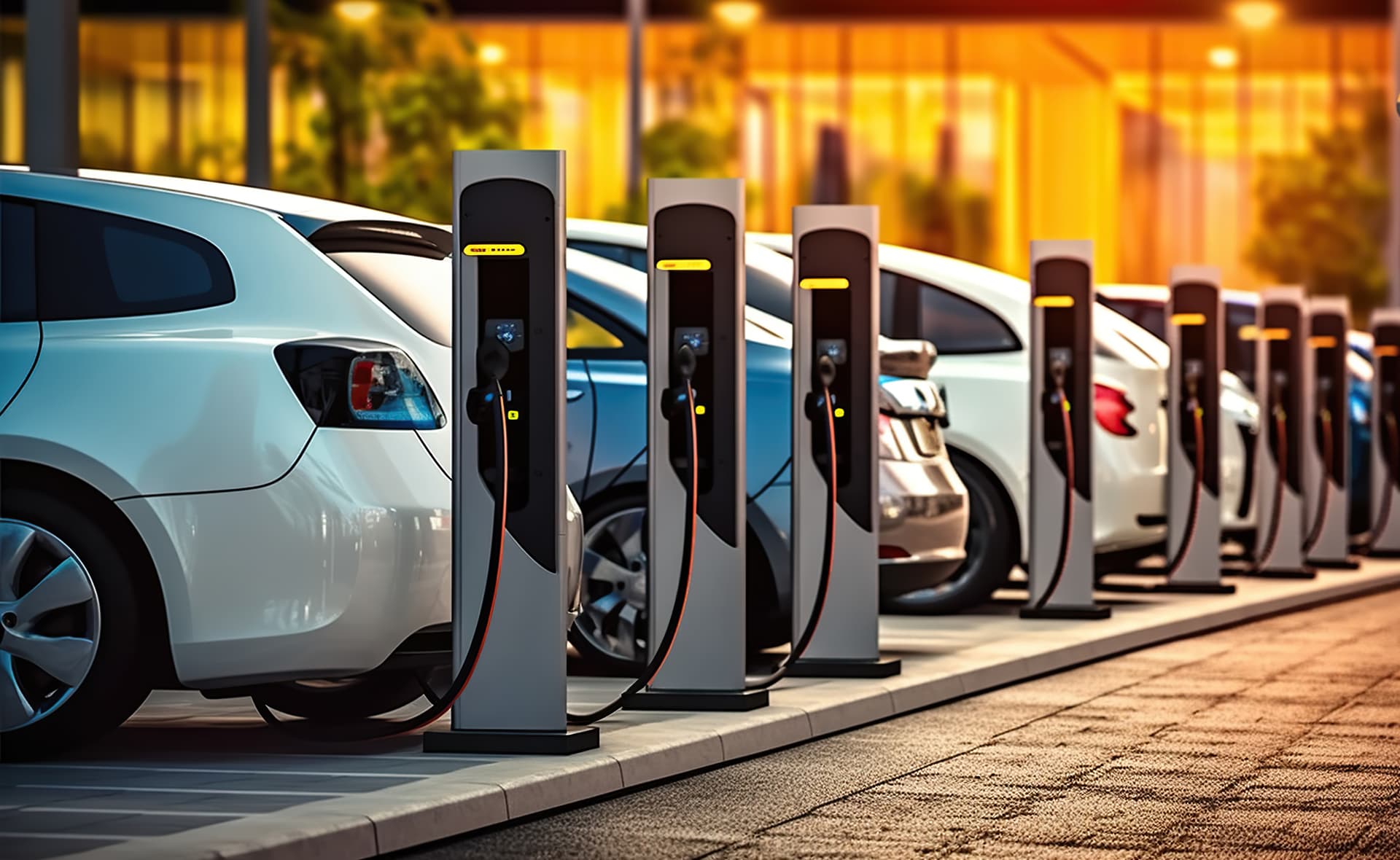NACS Is Here: What It Means for Charging Access in 2025
It's clear now 2025 has been a pivotal year for EV charging in North America. With the North American Charging Standard (NACS) gaining traction across automakers, the Tesla connector is quickly becoming the new industry baseline. And major manufacturers like Ford, GM, Rivian and others have already announced upcoming models will have NACS ports. Plus adapters for existing CCS-compatible vehicles are set to roll out over the next coming months.
For EV drivers, this shift means a much bigger pool of charging options, including long-awaited access to Tesla's Supercharger network. For businesses in the EV ecosystem, this transition is less about hype and more about logistics. "How do we ensure reliability, accessibility and consistency for drivers during this shift?"
Enter RoadtoEV. As an aggregator of chargers across North America, RoadtoEV offers a flexible, reliable layer of connectivity that helps bridge the gap between today's mixed-port landscape and tomorrow's standardized one.
NACS: What it means for the industry
The industry has long recognized the need for a unified charging standard. Currently, there are several competing connector types: the CCS, CHAdeMO and Tesla's proprietary plug. They have caused confusion for drivers and inefficiencies for infrastructure providers.
By consolidating around NACS, North American EV drivers can now gain wider network access. Non-Tesla drivers will be able to tap into the Supercharger network, reducing range anxiety and increasing long-distance viability.
This also means manufacturing consistency. Because automakers can simplify vehicle design, reducing costs and improving the customer experience.
Also a single standard paves the way for faster rollout of infrastructure and stronger confidence in EV adoption. In other words, the industry is now streamlined on the same highway.
But this transition might have some roadblocks. For at least the next two to three years, the EV landscape will still be in a hybrid state. New models will have NACS ports, while legacy vehicles will have to rely on adapters. And infrastructure providers will be scrambling to keep pace.
The Transition Challenge
For EV drivers, the challenge is "Will this charger work for my car?" During the rollout phase, there will be uncertainty:
- Not all chargers will have NACS connectors immediately.
- Adapters may not yet be widely available.
- Some networks will prioritize certain vehicles during integration.
For businesses, be it utility companies, charger manufacturers, or real estate developers, this uncertainty makes it harder to deliver a consistent customer experience without overbuilding or misallocating capital. It's a tough ask.
The risk is that drivers lose confidence if they encounter too many barriers during the transition. That's why reliability and pre-knowing access become essential.
RoadtoEV's Role in the NACS Era
RoadtoEV is uniquely poised to ease this transition. As a peer-to-peer and aggregator platform, it does not rely on a proprietary network of chargers. Instead, it connects existing infrastructure - home chargers, business installations and public units - into one accessible platform.
Here's how RoadtoEV makes the difference:
Adapter-Friendly Listings
Each RoadtoEV listing specifies connector type (CCS, J1772, NACS, etc.) and charging speed. Drivers can filter by compatibility, ensuring they don't waste time pulling up to an incompatible charger.
Revenue for Hosts, Utilization for OEMs
For charger manufacturers and utilities, RoadtoEV represents a utilization multiplier. Chargers listed on the platform become more discoverable, driving revenue for hosts and accelerating return on infrastructure investment.
Last-Mile Connectivity
Even as Tesla's Supercharger network opens up, the reality is chargers aren't evenly distributed. RoadtoEV brings the unique mix of chargers - driveways, small businesses, municipal installations into the fray, filling in coverage gaps and expanding the charging map.
"RoadtoEV was built to be infrastructure-agnostic." says Neeraj Garg, Founder, RoadToEV Inc. "We integrate natively with Tesla's NACS while also aggregating chargers from across networks. So, whether you're a driver navigating the transition or a business looking to monetize charging assets, we make it easy to plug in to the future."
Why Industry Stakeholders should partner with RoadtoEV
The NACS transition comes with its share of both challenges and opportunities. But partnering with RoadtoEV can help industry players navigate these strategically, and with greater ease. Here's how industry partners can benefit:
Automakers: Integrating RoadtoEV into vehicle navigation systems ensures drivers have multiple options beyond simply Superchargers or public chargers during the adapter rollout period.
Charger Manufacturers: Promoting RoadtoEV as a platform for customers to monetize their chargers, thereby offsetting installation and electricity costs, increases utilization and brand visibility significantly.
Utilities & Energy Providers: With RoadtoEV's dynamic marketplace, utilities can support off-peak charging incentives with pricing models.
Real Estate Developers: By encouraging tenants to list their chargers on RoadtoEV, developers create value-added amenities without the upfront investment.
Municipalities & Smart Cities: RoadtoEV enables cities to expand charging access quickly by mobilizing existing private infrastructure, without having to build anything new.
RoadtoEV: Building Confidence during the Transition
The single biggest risk during the NACS rollout is the gap between driver expectations and on-the-ground charging availability. If EV adoption is to continue on its current growth trajectory, the industry must keep confidence high.
RoadtoEV contributes to this in a number of ways. First by transparency. Every charger listing is clear about connector type, availability and access conditions.
Then through consistency. Seeing a wider variety of options helps avoid long lines at Superchargers and Public Charging Providers. And finally, there's the scalability. RoadtoEV grows organically as more homeowners, businesses and municipalities list chargers.
This distributed approach to charging access aligns with broader infrastructure goals. For example: leveraging existing assets before spending billions and overcoming bureaucracy for increasing installations.
Looking Ahead
By late 2025, most new EV models will ship with NACS ports, and adapters will be commonplace. But this transition period matters. The driver who buys their first EV in 2025 doesn't care about standards negotiations. They want to know whether they can reliably charge on a weekend trip, after work, or a shopping trip.
The businesses that step up to smooth this experience will not only retain customer trust but also position themselves as leaders in the next phase.
RoadtoEV app natively connects to Tesla NACS wall connectors, enabling hosts to monetize and manage electricity consumption.
Conclusion
The adoption of NACS is a major milestone for North American EVs. It simplifies the long-term landscape but perhaps complicates the short-term rollout. Drivers will still need the confidence, businesses will need flexibility, and the industry as a whole will need collaborative solutions.
RoadtoEV provides that connective tissue. It aggregates the chargers, and monetizes underused infrastructure. The platform is the bridge between today's fragmented environment and tomorrow's standardized one.
As NACS becomes the norm, RoadtoEV ensures that accessibility keeps pace with the trends. So EV adoption continues accelerating, without leaving drivers stranded on the way.
For EV Auto Makers, Home L2 Charger Manufacturers and Public Charger Operators, and other businesses looking to partner with RoadToEV app contact marketing@RoadtoEV.com
Consumers looking to participate can download the RoadtoEV app from www.roadtoev.com from all major app stores.





